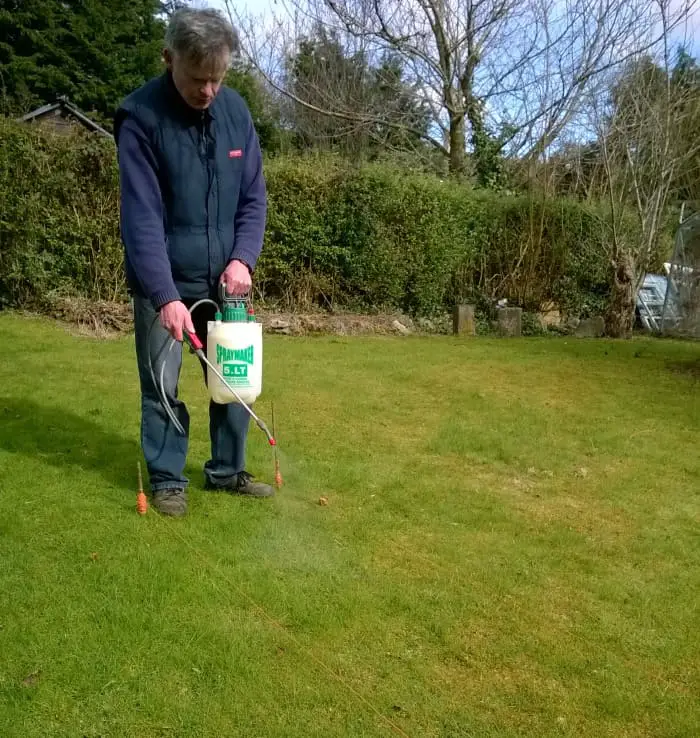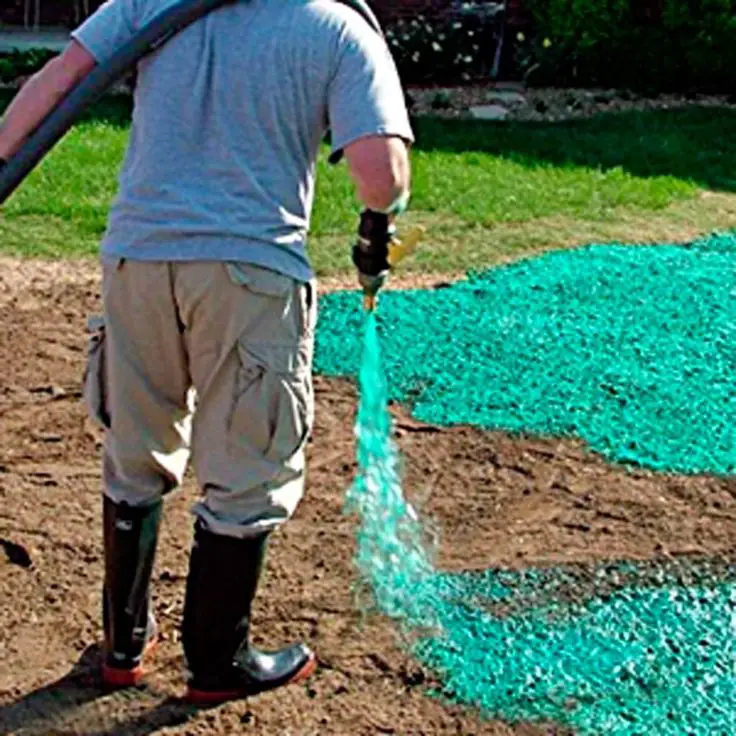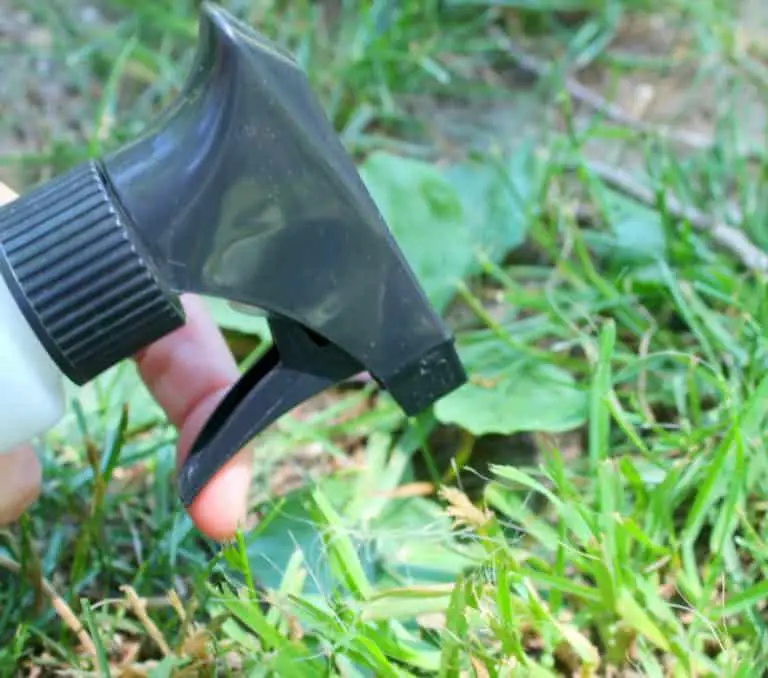When To Kill Grass In Garden Beds
Most grasses spread by underground roots , as well as by dropping seeds. So efforts to eliminate grass in the garden become harder if you allow the plants to mature. Each plant can scatter hundreds of seeds in a garden bed. Thus, grass in the garden should be dealt with whenever you see it, ideally early in the growing season before seed heads appear.
How Do You Clean Giardia From Soil
If your pet is showing signs of giardia , getting a vet to verify an infection is the first step in knowing whether your lawn may be infected or not with the parasite. On the other hand, an unknown animal may have visited your lawn. In either case, removing fecal matter is the first step to preventing the parasites from settling into the ground and spreading. The sooner, the better.
Very hot water will kill giardia in contaminated soil without using any other substances. Boiling water and pouring it over an area after removing fecal matter can prevent potential giardia from surviving and taking hold.
A diluted bleach solution is one of the most popular ways to get rid of the parasite without harming your lawn. A diluted bleach and water mixture of 3/4 cup of bleach per gallon of water can be applied with a pump or backpack sprayer for full-yard coverage.
Apply the diluted bleach solution in the morning, after any dew has dried, but before the midday heat so the bleach doesnt evaporate quickly. After sitting for 30 minutes, it should be rinsed off. This can be done by running a sprinkler for 10 minutes every two hours for the rest of the day . Keep your pet out of the yard for a few weeks or a month while the parasite is worked out of the soil.
What Effect Does Salt Water Have On Your Lawn
Not everyone has a chlorine pool salt water pools are becoming quite popular too. However, I think the negative effects that salt has on grass are a lot more ubiquitous than knowledge about chlorines negative effects.
If you live near a beach, have you ever wondered why there isnt grass to be found near it? Thats because salt and grass are not great friends.
Specifically, salt can stifle root growth and prevent nutrients and water from being absorbed by your grass. Salt can also linger on your grass and in the soil for a long time until it is washed away by fresh water.
Again, occasional splashes of salt water onto your pool is not much of an issue. Like chlorine, the concentration of salt in a salt water pool is low because of how diluted it is. And just like chlorine, the big problem is when you drain your pool.
The solution is also the same: dilute the pool with more water before draining, and turn on your sprinkler system or manually spray your grass with fresh water to ensure the salt is being washed off.
Read Also: How To Improve Your Lawn In The Spring
How Long Does Grass Take To Grow After Cutting
Seeded Lawns If you planted your seeds during their active growing season, the blades should reach a 3 to 3.5 inch height after eight weeks. Even in your first mowing session, however, you must tread carefully on the turf – do not maneuver the mower through quick turns or you may pull seedlings from the topsoil.
Solarizing To Kill Your Grass

For larger areas, one of the best ways to kill unwanted grass is to cook it. Focusing the sun on areas of the sod at its highest heat level will cook the roots and effectively kill it. You can use an old window or black plastic to hone the sun and heat in on the area. The optimal time for solarization is summer when the sun is at its hottest.
Cut the grass to a short length and then cover the area with plastic or glass. Black plastic works best but you can also use clear plastic. Hold the plastic down with rocks, soil staples, boards or whatever you have handy. It can take a few weeks to a month to kill the roots completely. Then remove the covering and turn over or remove the dead sod.
Recommended Reading: When Should You Apply Weed Killer To Your Lawn
You Need To Start Over
You may lovenatural grass and be committed to keeping a natural grass lawn in your yard. However, if your current lawn is riddled with brown spots, overgrown with weeds, or not a drought-tolerant variety, you may need to start over. If this is the case, you will need to kill and remove your current lawn to replace it with a more environmentally friendly option or just some healthy, new sod to get it looking green and welcoming again.
What Does Chlorine Water Do To Grass
IF YOUR POOL IS CHLORINATED However as the chemical is significantly diluted when mixed with your pool water, the short answer is that water that splashes onto your lawn from your pool should not kill it. … Undiluted chlorine, on the other hand, is a harsh chemical that can easily damage plants and grass.
Recommended Reading: How Much Are Robot Lawn Mowers
What Will Kill Grass Forever
Permanent Weed and Grass Killer Spray A non-selective weed killer, such as Roundup, is a great option for killing weeds and grass permanently. The Glyphosate in Roundup works by infiltrating the plant through the leaves. From there, it attacks all plant systems and kills them completely, including the roots.
How To Kill Grass
This article was co-authored by Lauren Kurtz and by wikiHow staff writer, Kyle Hall. Lauren Kurtz is a Naturalist and Horticultural Specialist. Lauren has worked for Aurora, Colorado managing the Water-Wise Garden at Aurora Municipal Center for the Water Conservation Department. She earned a BA in Environmental and Sustainability Studies from Western Michigan University in 2014. This article has been viewed 28,856 times.
If you’re looking to redo your lawn or clear out a big grassy area, you may need to kill the grass first. If you want to preserve the soil, and you dont mind waiting a couple months, smothering can be an effective way to eliminate grass. If youre in a hurry to get rid of the grass, an herbicide may be the right choice for you. Whichever method you choose, try to be as thorough as possible so no leftover grass manages to sneak back through.
Don’t Miss: When To Use Weed Killer On Lawn
Warm Season Grass Herbicides
Some weeds prefer the warmer weather, germinating in the spring or early summer and dying back in the fall as the weather gets colder. For instance, broadleaf weeds thrive in the warmer months. Using a herbicide specially formulated for seasonal weeds will increase the effectiveness of application without killing your grass.
How Tall Should Fescue Grass Be Mowed
The fescue should always be pruned to a height of 3 to 10 cm, regardless of the season. The shorter your lawn, the more water it needs to stay healthy. Short mowing causes damage and stress, thins the lawn and leaves plenty of room for weeds to grow. You have probably noticed that very short clipped areas are often heavily overgrown.
Also Check: Killing Ant Hills In Lawn
Don’t Miss: What Motor Oil To Use In My Lawn Mower
Is Bleach Or Vinegar Better To Kill Weeds
While their household variants are quite mild, bleach from your kitchen can kill plants and harm you as well. On the other hand, the vinegar from your kitchen is too weak to kill mature weeds and won’t harm you much. In the right concentrations, both bleach and vinegar can be used individually or mixed to kill weeds.
Choking Out Bermuda Grass Weeds

Its possible to choke out Bermuda grass from your lawn by mulching. This is best done using landscaping fabric. Alternatively, you can smother the Bermuda grass root system using a piece of cardboard.
To get rid of Bermuda grass naturally, go for the choking method. In general, there are two great ways of doing this as described below:
Using landscaping fabric
Mulching ensures that your wanted plants have access to moisture and nutrients.
Monitoring on a regular basis prevents the spreading of Bermuda weeds, which usually happens especially in instances where the installation of the fabric sheet wasnt done properly.
You should, therefore, contract a lawn expert if you arent sure of the correct way to go about covering your lawn with landscaping fabric.
The Bermuda grass root growth should be contained within two months by the dense landscaping fabric.
Using pieces of cardboard
This is another effective sheet-mulching technique. The barrier created by the cardboard pieces over the Bermuda grass turf denies the unwanted plant of the sunlight that it needs for photosynthesis.
Recommended Reading: How To Get Rid Of Fescue In Lawn
Regular Lawn Grasses Out Of Place
Some lawn grasses that dont blend well with other grasses, like tall fescue, can invade your lawn and grow in unsightly clumps. This creates an uneven look and possible tripping hazards in an otherwise smooth lawn. Other out-of-place lawn grasses, such as Poa trivialis, annual bluegrass and creeping bentgrass, are common invaders that can grow into thick patches of grass that gradually increase in size over time.
For a non-chemical solution, these patches of unwanted grass can be cut out with a spade or sodcutter. Make sure you remove as many of the roots as possible or youll see some of these plants grow back. You can also spray these areas with a nonselective herbicide like glyphosate. This will provide a total kill with little grow-back. Once the patches are removed or killed, you can seed or sod these spots.
Your Grass Is A Real Creep
Creeping grass varieties spread through underground rhizomes and aboveground stolons, and, if not effectively held in place by landscaping borders or hardscapes, they may creep into areas where you never intended to have a lawn. When this occurs, you may need to kill the grass to keep it from spreading.
Also Check: What To Do When Weeds Take Over Lawn
Is It Ok To Swim In A Green Pool
Short answer â it depends. Lakes contain a full ecosystem, complete with aquatic life that feeds on bacteria and toxins. This makes swimming in green water in nature safe. … Fortunately, assuming there are no allergies to the pollen, it is safe to swim in a pool with that as the cause for green water.
How To Get Rid Of Asian Watergrass
Most folks dont mind weeds as long as theyre not in their garden, flower beds, or crowding their once-pristine lawn. Once the weeds cross the boundary from their neighbors yard into their lawn or flower bed, these weeds become a nuisance.
Aside from being an eyesore, tufts of watergrass can complicate things for your lawn. So, to improve the overall health of your lawn, youll need to remove the invading grasses. This guide explains how to do it, so continue reading to learn more!
Recommended Reading: How To Kill Grub Worms In Lawn
Managing Weeds In Fescue Lawns
Factsheet | HGIC 2309 | Jun 14, 2021 | |
Tall fescue, Festuca arundinacea, is a popular turfgrass grown in the mountains and upper piedmont areas of South Carolina. Weeds should be controlled through an integrated approach to keep the lawn looking its best. This involves knowledge of weed characteristics and the cultural requirements of the turf.
Annual bluegrass seeds germinate in the fall, and this grassy weed makes white seed heads in the early spring.Joey Williamson, ©2015 HGIC, Clemson Extension
Precautions For New Lawns
It should also be noted that there are precautions for new lawns with regard to preemergence use. A new lawn must have time to become well-established, as preemergence herbicides can inhibit lawn grass root growth. Always read the label thoroughly for specifics regarding seeding. On fescue lawns, preemergence herbicides should not be applied in the fall if the lawn is to be over-seeded. If over-seeded by October, any preemergence herbicide application would have to be delayed until spring for summer weed control. To keep a tall fescue lawn thick and more weed-free, consider over-seeding one fall and alternating that with a preemergence herbicide application the next fall. In sodded areas, preemergence herbicides should be used only on well-established turfgrass tall fescue.
For bermudagrass lawns to be over-seeded with annual ryegrass, delay seeding until 6 to 16 weeks after the preemergence herbicide application .
Postemergence herbicides can be applied to newly seeded lawns at ½ the rate, but only after the lawn has been mowed four times. If overseeding after applying postemergence herbicide treatment, wait three to four weeks, depending on the product used. Postemergence herbicides should not be applied if summer temperatures are greater than 90 °F.
Table 1. Preemergence Granular Herbicides for Lawns.
| Weeds Prevented |
If this document didnt answer your questions, please contact HGIC at or 1-888-656-9988.
Recommended Reading: What Can I Spray On My Lawn To Kill Clover
You Want A Lawn Just Not A Water
You still want a green, lush lawn for your kids to play on, your dogs to nap on, and for that all-important curb appeal, but you are over it when it comes to the maintenance and irrigation requirements. Plus, it getsbrown spots, needs to be reseeded, and just takes a lot of effort to keep it looking healthy and inviting. So, when you are ready to replace it with low-maintenance synthetic turf, you are going to need to find out how to kill grass so you can make the switch.
How To Kill Water Grass

21 September, 2017
Water grass , is a tall perennial warm-season grass that commonly invades lawns. If you find tufts of water grass growing in your turf, there are several effective control methods that you can use to effectively eradicate it. But the best way to be rid of water grass for good is to improve the health of your lawn. Regular watering, mowing and fertilization will create densely growing turf that will resist weed invasions.
Dig clumps of water grass up with a shovel. Remove its root system as well as its foliage . This is the safest method for removing water grass in lawns. Because this is a grassy weed, any herbicide formulated to kill it will also kill the surrounding grass.
- Water grass , is a tall perennial warm-season grass that commonly invades lawns.
- If you find tufts of water grass growing in your turf, there are several effective control methods that you can use to effectively eradicate it.
Stop water grass seed from spreading to new areas. Re-seed any bare spots in your lawn, including those left behind by the water grass you just dug. Spread black plastic mulch or landscape fabric over garden areas to prevent the seed from establishing itself there.
Monitor your lawn for re-growth. If you can catch sprouting water grass before it matures and sets seed in late spring/early summer, you can kill the next generation of water grass before it establishes itself.
Read Also: Does Home Depot Sell Husqvarna Lawn Mowers
Moving On To Yellow Nutsedge
If you want to be technical about it, yellow nutsedge is neither a grass nor a weed. Its in the nameits actually a sedge.
However, because of its invasive nature, it has been considered a weed. Thats also why its one of those often referred to as a water grass.
Further
This sedge is a perennial. It looks like grass and works like a weed in the sense that it could damage crops and other plants near it.
Yellow nutsedge grows really fast through underground means. It thrives when there is no frost, not necessarily when the weather is hot. Its rhizomes, bulbs, and tubers work to multiply this species.
Heres the terrifying part
Every tuber can provide hundreds of shoots even in just a space of about three by six feet plot of land. That area alone will have a thousand new tubers.
Because of the underground structure of the yellow nutsedge, its quite difficult to control its spread.
Ways To Kill Your Grass Naturally
There are many reasons to get rid of grass in the landscape. The trick is in how to kill grass naturally without resorting to dangerous chemical preparations. The good news is that there are several natural ways to kill grass, all using items normally found in the home. Once the deed is done, you will be left with a safe, weed, and grass free zone ready for planting.
Read Also: How Much Does Lawn Aeration Cost
Heres Another One: Dallisgrass
This is yet another plant that is often referred to as water grass. It is scientifically known as Paspalum dilatatum and is commonly known as dallisgrass, Dallas grass, or sticky heads.
This type of weed is a native of Brazil and Argentina but has since made its way all over the world. Its one of the most common weeds we see in the garden or in the lawnor anywhere else for that matter.
More about it
This is a perennial that grows in a bunch. The grass blades spread outwards.
If left untouched, the dallisgrass could grow up to one meter tall.
What To Consider Before Killing A Lawn And Starting Over
You can make some big mistakes and make a bad lawn look even worse if you try to re-do your lawn but take the wrong approach.
I dont want you to waste your time, money, or make your neighbors angry. There are certain things that you need to consider and instructions you will have to know if you decide to proceed.
Ill discuss those here.
You May Like: How To Start Lawn Cutting Business